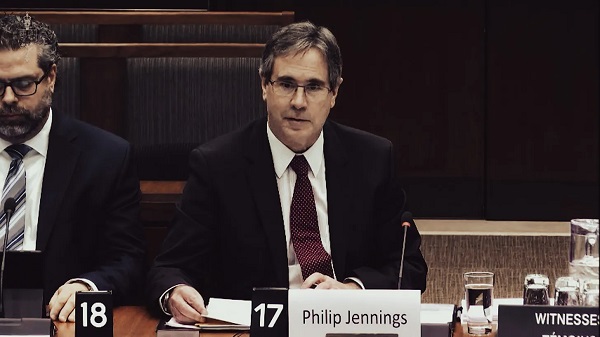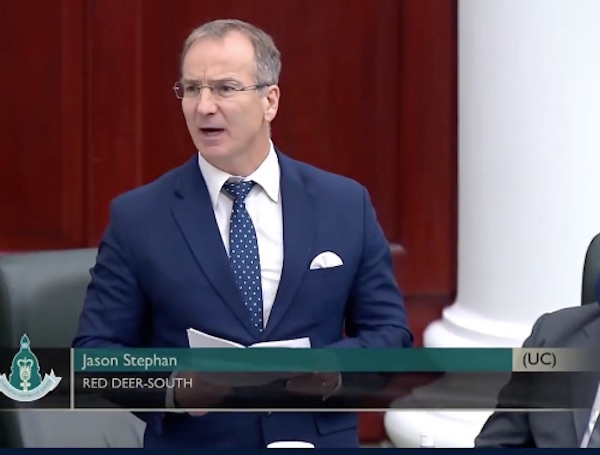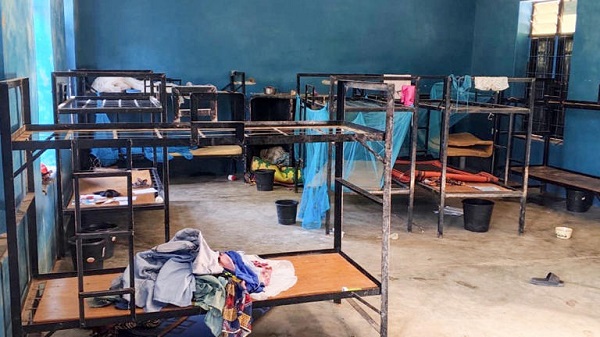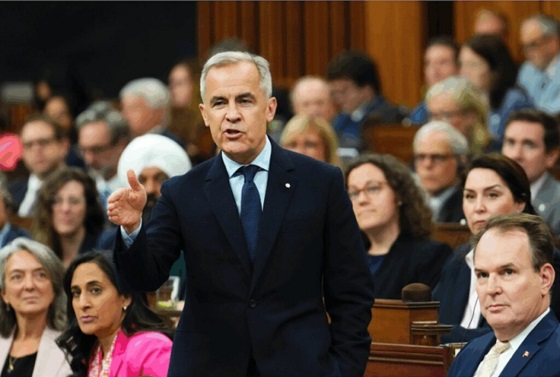Business
How the federal government weaponized the bank secrecy act to spy on Americans

A Congressional investigation committee released an extremely concerning report this week entitled: “FINANCIAL SURVEILLANCE IN THE UNITED STATES: HOW THE FEDERAL GOVERNMENT WEAPONIZED THE BANK SECRECY ACT TO SPY ON AMERICANS” that details how the US government has been monitoring American citizens through bank transactions, with an emphasis on citizens who have expressed conservative viewpoints.
“Financial data can tell a person’s story, including one’s “religion, ideology, opinions, and interests” as well as one’s “political leanings, locations, and more,”’ the report begins. This investigation began after a whistleblower who happens to be a retired FBI agent alerted Congress that the Bank of America (BoA) voluntarily provided the Biden Administration information on customers who used a credit or debit card in Washington, D.C., around the January 6 protests. The new report has revealed that federal agencies have been working “hand-in-glove with financial institutions, obtaining virtually unchecked access to private financial data and testing out new methods and new technology to continue the financial surveillance of American citizens.”
As I’ve said countless times, “money laundering” is ALWAYS the excuse for why the government must track and monitor our financial transactions. The Bank Secrecy Act (BSA) E-Filing System is a system for financial institutions to file reports required by the BSA electronically. By law, the BSA requires businesses to keep records and file reports to help prevent and detect money laundering. This is how the Biden Administration is attempting to disregard privacy and weaponize financial institutions.
US intelligence agencies searched through records for terms like “Trump” and “MAGA” to target Americans who they believed may hold “extremist” views. The agencies searched for Americans who purchased religious texts, such as the Bible, and also labeled them extremists. Anyone expressing disdain for the COVID lockdowns, vaccines, open borders, or the deep state were placed on a watchlist. Again, the BSA was used as a premise to pull transactions placed by the individuals on this list.
As explained by the investigative committee:
“With narrow exception, federal law does not permit law enforcement to inquire into financial institutions’ customer information without some form of legal process.9 The FBI circumvents this process by tipping off financial institutions to “suspicious” individuals and encouraging these institutions to file a SAR—which does not require any legal process—and thereby provide federal law enforcement with access to confidential and highly sensitive information.10 In doing so, the FBI gets around the requirements of the Bank Secrecy Act (BSA), which, per the Treasury Department, specifies that “it is . . . a bank’s responsibility” to “file a SAR whenever it identifies ‘a suspicious transaction relevant to a possible violation of law or regulation’”11 While at least one financial institution requested legal process from the FBI for information it was seeking,12 all too often the FBI appeared to receive no pushback. In sum, by providing financial institutions with lists of people that it views as generally “suspicious” on the front end, the FBI has turned this framework on its head and contravened the Fourth Amendment’s requirements of particularity and probable cause.”
Under this premise, anyone who held a viewpoint that opposed the Biden Administration was considered a “suspicious” individual who required monitoring. The Treasury Department’s Financial Crimes Enforcement Network created a database to carefully watch potential dissenters. Over 14,000 government employees accessed the FinCEN database last year and conducted over 3 million searches without a warrant. In fact, over 15% of FBI investigations during 2023 has some link to this database. It is estimated that 4.6 million SARs and 20.8 million Currency Transaction Reports (CTRs) were filed in the last year.
The committee noted that the government is incorporating AI to quickly search the web for “suspicious” Americans:
“As the Committee and Select Subcommittee have discussed in other reports, the growth and expansion of AI present major risks to Americans’ civil liberties.211 For example, the Committee and Select Subcommittee uncovered AI being used to censor “alleged misinformation regarding COVID-19 and the 2020 election . . . .”212 Those concerns are not hypothetical. Some AI systems developed by Big Tech companies have been programmed with biases; for example, Google’s Gemini AI program praised liberal views while refusing to do the same for conservative views, despite claiming to be “objective” and “neutral.” With financial institutions seemingly adopting AI solutions to monitor Americans’ transactions, a similarly biased AI program could result in the systematic flagging or censoring of transactions that the AI is trained to view as “suspicious.”
This is extremely troubling and goes beyond government overreach and violated numerous Constitutional protections. The government effectively transformed banking institutions into spy agencies, and anyone who could potentially hold a view that did not fit the Biden-Harris agenda has been treated as potential terrorist. It is completely insane that someone could be seen as an extremist for purchasing a religious text or purchasing a firearm. This is discriminatory, predatory behavior that puts millions of lives at risk. Think of governments in the past who have rounded up names of dissenters based on religion or ideology. They claim they are merely observing us, but the goal is to silence us.
The committee said their investigation has just begun as they will not allow the government’s abuse of financial data to go unchecked. Furthermore, they are concerned that these warrantless searches can lead to widespread debanking practices where the government can easily block any dissenter from participating in society by crippling them financially. This is yet another reason why governments want to push banks to create CBDC so that they can punish citizens with a simple click of a button.
Business
Blacked-Out Democracy: The Stellantis Deal Ottawa Won’t Show Its Own MPs

This isn’t just bureaucracy. This is a culture. A culture where global corporations and senior officials act as partners managing public information, while Parliament and citizens are treated like security risks to be managed.
Bureaucrats hid key terms of a $15-billion deal, blamed “confidentiality,” and Stellantis couldn’t even get its internet working to face MPs.
The most powerful people in Canada’s federal bureaucracy walked into a parliamentary committee this week and calmly admitted something that should make every taxpayer’s blood run cold:
When Parliament ordered them to hand over an unredacted copy of a multibillion-dollar contract with Stellantis, they didn’t obey Parliament.
They obeyed Stellantis.
This was the Standing Committee on Government Operations and Estimates (OGGO), meeting on the government’s response to a motion demanding the contracts between Canada and Stellantis for the Brampton Assembly plant. What unfolded over roughly two hours was not just a hearing. It was a live demonstration of who actually runs this country’s industrial policy: not elected MPs, not citizens, but a cozy alliance of bureaucrats and a global automaker hiding behind a black marker and a “confidentiality clause.”
And just to put a bow on the contempt: Stellantis itself didn’t even show up. We were told they had “IT issues.”
A company that builds electric vehicles and advanced manufacturing platforms apparently can’t figure out how to join a parliamentary Zoom call.
Sure.
From the start, Deputy Minister Philip Jennings of Industry Canada came in with one objective: defend the redactions.
His opening remarks were drenched in the usual Ottawa flattery. He told MPs their oversight role was “vital,” that accountability “maintains public trust,” that transparency is “important.” All the right words. Then he immediately pivoted to why they had blacked out chunks of the Stellantis–Brampton contribution agreement and why MPs, and by extension Canadians, should accept it.
He warned that some information is “commercially confidential,” that releasing it could cause “significant damage” in a “highly competitive” auto sector. He lumped in aerospace, AI, and other “knowledge-based sectors” just in case anyone missed the buzzwords. If companies couldn’t trust Ottawa to keep secrets, he said, future deals might be at risk.
So the stage was set: democracy on one side, “commercial sensitivity” on the other.
Jennings made it clear where his department chose to stand.
Conservative MP Kyle Seeback was one of the first to cut through the spin. He had actually read the documents. That’s already more than can be said for half of Ottawa on most days.
Seeback pointed out that another Strategic Innovation Fund agreement, number 810819553, had already been released under access to information and is now posted publicly on CBC’s website. That contract, same program, similar format, came out with limited redactions.
Meanwhile, the Stellantis agreement at issue – 813816251, which covers the Brampton deal – is being guarded like a state secret. Jennings insisted MPs could only see it in camera, with redactions, under strict rules: no phones, no recording devices, no notes leaving the room.
Seeback essentially asked the obvious: why is a journalist with an ATIP request allowed to see more than Parliament?
If a media outlet can obtain a contribution agreement and post it online for the entire world to download, how can the government stand there and claim that another, nearly identical contract is too sensitive for elected MPs to even discuss openly?
Jennings had no coherent answer. He kept repeating that he was only there to talk about “this” contract, that this particular agreement has “commercially confidential” elements that must be protected, that they were following a “balanced” approach used in past parliaments.
It didn’t wash. Seeback hammered the absurd logic:
Either the whole contract is commercially confidential, or it isn’t. The department itself had only redacted specific parts. It admitted that the entire document is not some sacred secret. Yet Jennings still insisted Parliament can only discuss it behind closed doors, while an access-to-information process might eventually dribble out the same text with similar or fewer black bars.
In other words: under this department’s logic, an ATIP officer and a CBC editor end up with more practical freedom to handle these documents than Canada’s elected representatives.
If that doesn’t tell you who this system was built to serve, nothing will.
Subscribe to The Opposition with Dan Knight .
For the full experience, upgrade your subscription.
It got worse.
Conservative MP Jeremy Patzer went right at the heart of the matter: who actually wielded the metaphorical Sharpie?
“Are you the one responsible for the redactions?” he asked Jennings.
“No,” said the Deputy Minister.
So who was?
Jennings admitted that his team had “direct discussions with Stellantis.” Ultimately, he said, Stellantis had to agree to what they were “willing to have” shared with the committee, even in camera. The company insisted the documents only be shared in closed doors, and that condition shaped what MPs received and how they could view it.
Let that sink in: Parliament ordered unredacted documents. Stellantis told the department what it was “willing” to allow Parliament to see. The department complied.
Patzer reminded Jennings that OGGO had passed a motion for fully unredacted documents and that previous committees in earlier Parliaments had managed to view contracts in camera without this kind of corporate veto. He asked what gave the department the authority to ignore Parliament’s order.
Jennings invoked clause 16.1 of the contract, a confidentiality provision. He claimed Canada had a “contractual obligation” to protect Stellantis’ information and that he didn’t want to “breach the contract.”
So Patzer turned to the law clerk.
Does clause 16.1 supersede Parliament?
The law clerk’s answer was blunt: no. Confidentiality clauses do not override Parliament’s power to compel documents. The same way they don’t trump a court order.
There it was, spelled out on the record: nothing in the contract legally prevented the department from giving MPs exactly what they asked for. The cover-up was a choice.
Bloc Québécois MP Marie-Hélène Gaudreau cut through the legal fog with the kind of language normal people understand.
“Who’s the boss?” she asked. “Is it democracy, is it the government, or is it the company?”
She reminded everyone that MPs were elected to oversee public money – not to sit politely while a multinational corporation decides which parts of a taxpayer-funded contract Parliament is allowed to see. She recalled the WE Charity affair, when MPs were forced to review sensitive documents in a locked-down room with no phones, no staff, no notes. That was considered acceptable and workable then. Why not now?
She pressed Jennings on why he had never even asked Stellantis if the full contract could be shared in camera. He admitted they didn’t raise that option with the company at all.
So Parliament asked for everything. The department didn’t even test the limits of what the corporate partner might accept. It simply defaulted to the company’s comfort zone.
Later, as Stellantis continued to “struggle” with its connection, Gaudreau’s frustration boiled over. She stated plainly that a corporation of this size, working at the cutting edge of EV technology, claiming to have internet issues for over an hour was unbelievable. She asked the clerk what the committee could do. The answer: they can summon the company. If Stellantis ignores a summons, it can be referred to the House as a breach of privilege.
Gaudreau ended one of her interventions with a warning directly into the microphone: “Stellantis, if you’re listening to me, we’re waiting for you. If not, we will summon you.”
They were listening. They just weren’t coming.
The sheer number of absurd redactions was another scandal inside the scandal.
Seeback pointed out that provincial funding “envelopes” were partially blacked out. The total dollar figures were visible, but the specific provincial programs providing money were removed – even though those programs are already public and appear in provincial budgets and estimates.
How is the name of an existing public program “commercially sensitive”?
No answer that wasn’t insulting.
Whole schedules of work – the detailed project plans that are supposed to be the core accountability tool in a multi-billion-dollar deal – were fully blacked out. Every word. Conservative MP Tamara Jansen called that out as creating “the appearance of a deliberate cover-up.” No one watching needed a law degree to see she was right.
Conservative MP Vincent Niel Ho drilled into section 6.35, the part that details Stellantis’ legally binding R&D commitments in Canada. Those are the supposed returns on this enormous “investment” of taxpayer cash: research, innovation, jobs.
The exact R&D dollar amounts in that section?
Redacted.
So Canadians are told this deal will bring R&D investment. They’re told the commitments are legally binding. But the specific figures – the actual numbers that might allow someone to test whether the deal is remotely fair – are hidden. Meanwhile the boilerplate legal clauses, the governing law, the confidentiality language, all of that remains neatly visible.
When Ho asked why, Jennings refused to discuss the specifics in public, citing the company’s conditions. When pressed, he fell back again on the contract: under its terms, he said, Canada must consult Stellantis on any disclosure and treat information as confidential “unless the company is willing to share it.”
The interests of the Canadian public never seem to get that kind of deference.
Then there was the question of how many people inside government have actually seen this sacred, unredacted agreement that Parliament apparently cannot be trusted with.
Jennings acknowledged that only a small group at the department had read the full contract: the negotiation team, a few program officers, a couple of finance people. He estimated maybe four to six people beyond those sitting at the witness table. That makes perhaps eight to ten in total.
Notably absent from that list: the current minister. Jennings admitted she has not seen the fully unredacted contract, and that he himself hasn’t either. The agreement was negotiated under his predecessor, he said, and he “did not need to know.”
The Privy Council Office? Also likely in the dark. The law clerk? No. Parliament? Absolutely not.
So here is the structure: a tiny inner circle of unelected officials and their counterparts at Stellantis have full knowledge of how billions of public dollars are being deployed. The minister gets briefed selectively. The Prime Minister’s department isn’t fully looped in. Parliament is handed a blacked-out version and told to be grateful.
If that isn’t the definition of the swamp, what is?
Subscribe to The Opposition with Dan Knight .
For the full experience, upgrade your subscription.
The Liberal MPs on the committee did their best to provide cover without looking like they were providing cover.
Jenna Sudds, Karim Bardizzi, Vince Gasparro, Tim Watchorn, and Iqra Khalid all, in different ways, repeated the same talking points: the Strategic Innovation Fund is a great program; Canada is competing with the U.S. and Mexico; other jurisdictions also keep their deals secret; confidentiality is “standard”; and we must protect a vague thing called “competitiveness” or risk losing future investments.
Gasparro, in particular, leaned heavily into the foreign-investment argument. He asked whether other advanced economies would publish contracts like this. Jennings said that “by and large” they would not, and even went so far as to say that having less information in the public domain can be “a comparative advantage” for Canada.
So secrecy isn’t just tolerated. It is defended as a strategic tool.
What none of the Liberal MPs wanted to confront head-on was the core fact: Parliament ordered unredacted documents, and the department decided to obey a corporate confidentiality preference instead.
They expressed frustration that Stellantis wasn’t there. They lamented the move of Jeep Compass production to the United States. They talked about workers and communities. But when it came time to challenge the bureaucracy on why a private company was allowed to dictate what Parliament could see, their questions magically softened into process inquiries and philosophical musings about trust.
If you strip away the jargon and the procedural dance, this committee hearing revealed something very simple and very ugly.
A multinational corporation signed a contract with the Government of Canada for a massive subsidy deal.
That contract contained a confidentiality clause.
Parliament, the supposed supreme body in our constitutional system, ordered that contract to be produced without redactions.
The senior bureaucrat responsible for the file admitted:
He did not even ask the company if it would allow a full in-camera disclosure to MPs.
He let the company decide what was “commercially confidential.”
He allowed the company to set the conditions under which Parliament could see even a redacted version.
He invoked a contract clause that the law clerk plainly stated does not and cannot override Parliament’s powers.
He claimed he was trying to “balance” interests, but every time the balance had to be struck, it tilted toward Stellantis and away from transparency.
And while all of this was being dissected in real time, Stellantis itself allegedly couldn’t get on a video call.
Canadians were told to believe that a company sophisticated enough to negotiate billions in subsidies, design electric vehicle platforms, and build advanced manufacturing facilities somehow hit the one technological barrier it just couldn’t overcome: logging into a parliamentary committee.
This isn’t just bureaucracy. This is a culture. A culture where global corporations and senior officials act as partners managing public information, while Parliament and citizens are treated like security risks to be managed.
It is not an accident that the entire schedule of work is blacked out. It is not a fluke that R&D commitments are hidden. It is not a coincidence that the law clerk had to remind everyone that Parliament outranks a boilerplate confidentiality clause.
This is the system functioning exactly as it was built: to shield the details of massive public-private deals from the people paying for them, while everyone involved talks earnestly about “trust.”
Trust, in this case, has a very specific meaning: trust the bureaucrats, trust the company, trust the process.
Just don’t trust yourself with the truth.
Artificial Intelligence
Google denies scanning users’ email and attachments with its AI software

From LifeSiteNews
Google claims that multiple media reports are misleading and that nothing has changed with its service.
Tech giant Google is claiming that reports earlier this week released by multiple major media outlets are false and that it is not using emails and attachments to emails for its new Gemini AI software.
Fox News, Breitbart, and other outlets published stories this week instructing readers on how to “stop Google AI from scanning your Gmail.”
“Google shared a new update on Nov. 5, confirming that Gemini Deep Research can now use context from your Gmail, Drive and Chat,” Fox reported. “This allows the AI to pull information from your messages, attachments and stored files to support your research.”
Breitbart likewise said that “Google has quietly started accessing Gmail users’ private emails and attachments to train its AI models, requiring manual opt-out to avoid participation.”
Breitbart pointed to a press release issued by Malwarebytes that said the company made the changed without users knowing.
After the backlash, Google issued a response.
“These reports are misleading – we have not changed anyone’s settings. Gmail Smart Features have existed for many years, and we do not use your Gmail content for training our Gemini AI model. Lastly, we are always transparent and clear if we make changes to our terms of service and policies,” a company spokesman told ZDNET reporter Lance Whitney.
Malwarebytes has since updated its blog post to now say they “contributed to a perfect storm of misunderstanding” in their initial reporting, adding that their claim “doesn’t appear to be” true.
But the blog has also admitted that Google “does scan email content to power its own ‘smart features,’ such as spam filtering, categorization, and writing suggestions. But this is part of how Gmail normally works and isn’t the same as training Google’s generative AI models.”
Google’s explanation will likely not satisfy users who have long been concerned with Big Tech’s surveillance capabilities and its ongoing relationship with intelligence agencies.
“I think the most alarming thing that we saw was the regular organized stream of communication between the FBI, the Department of Homeland Security, and the largest tech companies in the country,” journalist Matt Taibbi told the U.S. Congress in December 2023 during a hearing focused on how Twitter was working hand in glove with the agency to censor users and feed the government information.
If you use Google and would like to turn off your “smart features,” click here to visit the Malwarebytes blog to be guided through the process with images. Otherwise, you can follow these five steps courtesy of Unilad Tech.
- Open Gmail on Desktop and press the cog icon in the top right to open the settings
- Select the ‘Smart Features’ setting in the ‘General’ section
- Turn off the ‘Turn on smart features in Gmail, Chat, and Meet’
- Find the Google Workplace smart features section and opt to manage the smart feature settings
- Switch off ‘Smart features in Google Workspace’ and ‘Smart features in other Google products’
On November 11, a class action lawsuit was filed against Google in the U.S. District Court for the Northern District of California. The case alleges that Google violated the state’s Invasion of Privacy Act by discreetly activating Gemini AI to scan Gmail, Google Chat, and Google Meet messages in October 2025 without notifying users or seeking their consent.
-

 Alberta2 days ago
Alberta2 days agoPremier Smith explains how private clinics will be introduced in Alberta
-

 Business2 days ago
Business2 days agoUS Supreme Court may end ‘emergency’ tariffs, but that won’t stop the President
-

 Censorship Industrial Complex2 days ago
Censorship Industrial Complex2 days agoUK Government “Resist” Program Monitors Citizens’ Online Posts
-

 International2 days ago
International2 days ago“The Largest Funder of Al-Shabaab Is the Minnesota Taxpayer”
-

 Alberta2 days ago
Alberta2 days agoAlberta introducing dual practice health care model to increase options and shorten wait times while promising protection for publicly funded services
-

 espionage1 day ago
espionage1 day agoSoros family has been working with State Department for 50 years, WikiLeaks shows
-

 Alberta1 day ago
Alberta1 day agoRed Deer’s Jason Stephan calls for citizen-led referendum on late-term abortion ban in Alberta
-

 International2 days ago
International2 days ago50 of the 315 students and 12 staff abducted from Catholic school in Nigeria last week have escaped










